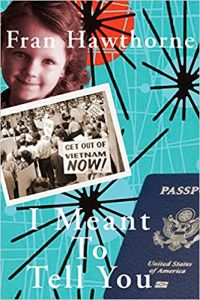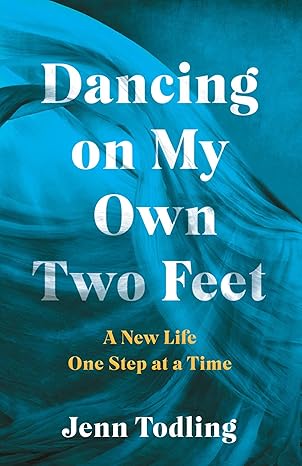HOW A LUDDITE LEARNED TO LOVE INSTAGRAM
 Until last October, I had never texted a photo. I used my Instagram account only to follow family updates. I still can’t access a QR code via my phone to save my life. (Literally: When I went for a Covid test in February, the annoyed clinic staffer finally had to click on the code and fill in the online form herself.)
Until last October, I had never texted a photo. I used my Instagram account only to follow family updates. I still can’t access a QR code via my phone to save my life. (Literally: When I went for a Covid test in February, the annoyed clinic staffer finally had to click on the code and fill in the online form herself.)
But with my newest novel, I Meant to Tell You, coming out this fall, the entire publishing world seemed to be telling me: If you’re not on Instagram or Facebook – or both—your book won’t exist.
Okay. I took a deep breath. And then, as I tried to create a new Instagram account, I somehow messed up, keyboarded the wrong user name, and was barred from changing it for three weeks.
In my first few nervous posts, I simply grabbed canned images to illustrate an event or idea – a photo of runners when results of the New York Marathon lottery were announced, a picture of the New-York Historical Society because I was returning as a volunteer after a two-year Covid hiatus, the cover of a book I was reading for #fridayreads. But I quickly saw how boring and flat those posts were.
I would have to alter my entire way of looking at the world, to think like an artist, not a writer. As if I were painting a still life, I would need to consider individual items, their configuration, the background, the color scheme. Because the Instagram canvas is so small, however, this “still life” would be limited to only a few objects – while still somehow evoking the spirit of the book, event, or place I wanted to tell people about.
Back at the Historical Society, I asked a colleague to snap me studying an exhibit. Nice – Post #4 — but that didn’t count as my own effort.
The weather was lovely on the following Friday, the day for the popular hashtag #fridayreads, so why not stage my photo as if I were reading that week’s particular selection, The Sympathizer by Viet Thanh Nguyen, outdoors? Perhaps with a bottle of water and a little snack – a red apple, since the book cover is red. Next to the daffodils in my backyard, to bring out the touches of gold in the cover … Post #7.
Suddenly, I’d discovered my inner Mary Cassatt.
Now I spend all week avidly planning my #fridayreads layout, plus as much as 20 minutes curating it. I wanted to use cute stuffed animals for the novel Scary Monsters as a kind of ironic commentary on the concept of monsters, but would the stuffed bear or the donkey be better? (Post #35) How could I position The Puppeteer’s Daughters without either the tulips or the purple trowel covering up the book title? (#13) Were there too many water bottles and glasses surrounding Properties of Thirst? (#20)
For a post about my French class (#16), I ran around to four bakeries seeking the perfect croissant. (Of course, the four samples I bought really shouldn’t go to waste, so…)
During the first months of Covid, when movies, museums, and meals out with my husband and friends had been pretty much eliminated, I’d started a tradition of taking a long, solo walk every weekend, to explore a different coastline near my home in New York City. It seemed a natural fit to make that an Instagram tradition, too: #weekend #waterside #walks
Unfortunately, the correlation turned out to be far less natural than I’d expected. For one thing, I hadn’t been in the habit of taking photos while I walked. And the very theme of my exploration itself implies an unphotogenic sameness. After all, I wasn’t visiting statues, houses, or streets, with their variations of architecture and construction materials. I was generally walking on a sidewalk, bordered by a fence, next to water, in a big city.
The Manhattan skyline across the Hudson River as seen from New Jersey. The Brooklyn skyline across the East River from Manhattan. The Queens skyline across the East River from Roosevelt Island. The Manhattan skyline from Governors Island.
Often, what made a vista thrilling to me in person – the closeness of the Statue of Liberty as I stood at the end of Valentino Pier in Brooklyn, or the sweeping view of Queens, Manhattan, and Randalls and Wards Islands from the northern tip of Roosevelt Island – didn’t translate adequately to Instagram’s tiny screen.
To be honest, I’m not sure I’ve really resolved that problem, but I love the fact that I’m learning to look at my surroundings in so many more ways than I used to do.
The ultimate proof that I’ve become an Instagrammer came within my first couple of weeks. As I was walking on an errand, I noticed one of my all-time favorite books—Josephine Tey’s The Daughter of Time, which launched my fascination with English history when I was in middle school — sitting in a small pile on the sidewalk. I promptly whisked out my phone. (Post #8)
—
FRAN HAWTHORNE has been writing novels since she was four years old, although she was sidetracked for several decades by journalism. During that award-winning career, she wrote eight nonfiction books, mainly about consumer activism, the drug industry, and the financial world. ETHICAL CHIC (Beacon Press) was named one of the best business books of 2012 by Library Journal, and PENSION DUMPING (Bloomberg Press) was a Foreword magazine 2008 Book of the Year. She’s also been an editor or regular contributor for The New York Times, Business Week, Fortune, and many other publications. But Fran never abandoned her true love: With the publication of her debut novel, THE HEIRS, in 2018 and now I MEANT TO TELL YOU, Fran is firmly committed to fiction. She’s at work on her next novel and also writes book reviews for the New York Journal of Books. She lives in Brooklyn, New York. Find her online at www.hawthornewriter.com
I MEANT TO TELL YOU
 When Miranda Isaacs’s fiancé, Russ Steinmann, is being vetted for his dream job in the U.S. attorney’s office, the couple joke about whether Miranda’s parents’ history as antiwar activists in the Sixties might jeopardize Russ’s security clearance. But as it turns out, the real threat emerges after the attorney’s office discovers that Miranda was arrested for felony kidnapping seven years earlier – an arrest she’d never bothered to tell Russ about.
When Miranda Isaacs’s fiancé, Russ Steinmann, is being vetted for his dream job in the U.S. attorney’s office, the couple joke about whether Miranda’s parents’ history as antiwar activists in the Sixties might jeopardize Russ’s security clearance. But as it turns out, the real threat emerges after the attorney’s office discovers that Miranda was arrested for felony kidnapping seven years earlier – an arrest she’d never bothered to tell Russ about.
Miranda tries to explain that she was only helping her best friend, Ronit, in the midst of a nasty divorce and custody battle, take her daughter to visit her parents in Israel. Russ doesn’t see it quite as innocently. “I thought I knew you,” he says. Now, it’s not only Russ’s job at stake, but their marriage plans, too.
In a frantic search for allies to persuade Russ that she’s not a criminal, Miranda either makes the situation worse, or exposes other secrets and mysteries. Ronit has vanished. Russ’s mother isn’t particularly sympathetic and alludes to something thorny in Russ’s past. Meanwhile, Miranda’s stepfather – who has just revealed to her mother that he’s been having an affair — starts dropping cryptic hints about her biological father. On top of all that, Miranda is arrested again, this time for drunk driving.
With everything she thought she knew about the people she loves most, and even herself, upended, Miranda turns her focus to the things she is sure about. She must face the truth with her mother and with Russ, and do whatever it takes to save Russ’s job and their engagement.
BUY HERE
Category: Contemporary Women Writers, How To and Tips





























Thank you for the mention of The Puppeteer’s Daughters, Fran, and for your lovely review (and photo) of the book. Your IG skills look good to me! 🙂
To be a successful Instagrammer you have to think like an artist, not like a writer. What an interesting insight–for writers! It makes sense and seems intuitive, but I hadn’t thought about it that way.Thank you for the tips and the inspiration.
Thanks, Sharon. (This is Fran, the author who wrote this post.) I’m not sure how good my Instagram photos actually are, but I’m having fun staging and taking them!